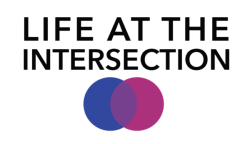HOW TO FIND THE CAUSE CLOSEST TO YOUR HEART
I’m so glad you’re here, ready to find your passion and make a difference in the world. When you align your values with action, you take a powerful step, and finding the cause closest to your heart is where it all begins. This page is your starting point on that journey.
Find Your Passion and Make a Difference: Why Finding the Cause Closest to Your Heart Matters
When you think about making a difference, it’s easy to feel pulled in a hundred directions. Climate change, feminism, racial equality, and other pressing issues of our times all need attention.
Instead of being overwhelmed, focus your passion. You’ll become a confident, impactful changemaker. Focusing on the cause closest to your heart is motivating and will help you avoid burnout. You’ll develop expertise in a way that is impossible if your actions are scattershot. Simply put, you’ll be more effective, and your activism will bring you joy.
When you find your passion and make a difference, you contribute to a better world. However, it’s also about discovering what makes your life meaningful and impactful. Research shows that people who volunteer report greater satisfaction and well-being.
You will be a confident, impactful changemaker when you focus your passion, with activism a fulfilling part of who you are.
How To Find the Cause Closest to Your Heart: An Overview
How do you find the cause closest to your heart, one that aligns with your values and fills you with purpose?
- First, create a vision of your ideal life to guide you. Find your passion and make a difference by aligning your values with action, identifying your most meaningful life roles, and examining your life lessons.
- Compare your ideal world to your current world. The gaps between the world you want and the one you have are your potential activism causes.
- Finally, narrow your potential causes to one that taps into your passion and the gifts you bring to the activism table.
Will reflecting on these parts of your life take time? Yes, but putting in this effort up front will guide you to a perfect place to use your passion and skills to make change. So many people jump off the sidelines without planning, resulting in a high activism dropout rate.
Take the time to reflect on these questions and you’ll be a better activist, and you’ll transform your life into one where you live your values.
Step 1: Create a Vision of Your Ideal Life
The first step to finding the cause closest to your heart is to create a vision of your ideal life.
Your Roles
Consider your life roles. How will activism fit in? Spoiler alert: We can only manage 5 roles effectively.
What roles do you play in life? Obvious choices are parent, child, and employee. But if you were to track the time you spend on activities, what picture would emerge? One of your top roles might be TV consumer! Perhaps you spend more time watching television than exercising.
Being clear about your life’s essential roles means you can place your precious time and energy on what is most important. And a better understanding of your roles helps you decide how activism fits into your ideal life.
Your Values
Align your values with action. Studies suggest that aligning actions with core values leads to a stronger sense of life satisfaction and resilience.
Think about the difference between two people.
Person 1’s core values are service, harmony, contentment, generosity, and friendship.
Person 2’s core values are leadership, accomplishment, capability, quality of life, and responsibility.
Person 1 will probably live quite a different life than Person 2. But they are both activists. Living their values will likely take them on different activism paths, even if they choose the same cause. You can find your passion and make a difference in a way that honors your values.
How You’ve Made Change
Examine what ways you’ve made change in the past.
- Your Time: The hours you have spent supporting a cause.
- Your Talent: The skills you have used to support a cause.
- Your Treasure: financial support you provide to a cause to make change.
Your Life Lessons
Learn from your life lessons. What have they taught you? What experiences have shaped your worldview? One way you can live an ideal life is to understand the ways you have been successful in your life and how you stumbled. So, look back at your life experiences and the people you’ve met. Then, learn from those experiences to help guide your life as you move forward.
Activist Example
James wants to give back to his community but finds himself stretched thin. He decides to step back and focus on the one cause that means the most to him.
First, he creates a vision of his ideal life.
Roles: My 5 roles are student, son, partner, employee, and community advocate.
My Values: responsibility, family, capability, wisdom, and contentment.
Ways I Made Change: I am a college student working part-time to pay my tuition. I don’t have much time or treasure, but I continue a high school project of volunteering at the local food pantry. At times in my childhood, my family didn’t have enough food and had to rely on the food pantry. So, I prioritize a bit of my limited time to give back.
Life Lessons: I haven’t made many life choices yet, but when I reflect on what I would do differently, I remember growing up without enough food, and I feel ashamed that I hid that from my friends. There shouldn’t be a stigma associated with getting help when you need it, and I wish I had been open about our struggles so others would be aware of the issue. Also, my friends may have been more open with me if they were struggling.
James’ Life Vision: “I enjoy a life with family and friends and feel a sense of contentment. I have a profession that makes me want to go to work each day. I focus on my cause and give back to my community. Continuing to learn and grow is important.”
Step 2: Compare Your Ideal World to Your Current World

Create a Vision of Your Ideal World
When you reflect on the state of your community, the country, or the world, what do you wish? What does your ideal world look like? In the same way you use your ideal life to focus, envisioning your ideal world will also help you understand your wishes. Studies show that visioning exercises help you find your passion and make a difference.
Describe the kind of world you would create. Be clear about the change you wish to see in the world.
Use these categories to support your vision: Relationships, Education, Government, Currency, Employment, Nature, Religion, Peace, Trade, and Health.
- Prepare your environment so you are free to reflect without distractions.
- Imagine your ideal world. Just start writing. Don’t edit yourself. That will come later.
- Take as many rounds of reflection as you need to generate your ideas.
- Summarize your ideal world in a paragraph.
Describe Your Current World
Now, examine your current world.
Use the same categories: Relationships, Education, Government, Currency, Employment, Nature, Religion, Peace, Trade, and Health.
- Prepare your environment so you are free to reflect without distractions.
- Recognize that this exercise can be stressful. Remember the end goal – to find the cause closest to your heart.
- Imagine your current world. Just start writing. Don’t edit yourself. That will come later.
- Take as many rounds of reflection as you need to generate your ideas.
- Summarize your current world in a paragraph.
Bridge the Gaps Between Your Ideal World and Current World
Compare your ideal world to your current world.
- Get yourself settled and comfortable.
- Compare your ideal world and current world. Find the gaps.
- Which gaps resonate with you the most? Are you drawn toward a particular need or cause? Try to list at least three gaps. These are candidates for the cause closest to your heart.
The gaps between the world you want and the one you have represent potential activism causes—issues that resonate with you and offer an opportunity to find your passion and make a difference.

Activist Example
James imagines his ideal and current world and examines the gaps.
In my ideal world, people look out for each other, so everyone has their basic needs met. A college education is free. Scientists have solved the climate change crisis, so the environment is healthy. Freedom of religion (and from religion) is accepted freely, and no one tries to exert their religious principles into other people’s lives. There is world peace.
In my current world, I see much inequity – racial, gender, orientation, income, and health. Greed for money and power seems to be increasing, causing the gap between the social classes to widen. The lack of progress on climate change alarms me and makes me wonder whether I should have children. Educational standards are dropping, and college is out of reach for many people.
Bridging the gap: I am inspired by the people in my community who tirelessly provide for those in need. I feel angry about the lack of action on the climate crisis. It breaks my heart when children don’t have essential resources such as food, healthcare, and education.
James identified his top three passions:
- Providing resources for children and families.
- Climate change activism.
- Working to make education more accessible.
Step 3: Narrow Your Potential Activism Causes
It is time to narrow your potential activism causes to the one closest to your heart.
Sometimes, the cause closest to your heart reveals itself through strong emotional reactions. Emotional triggers often point to areas where you feel a deep connection or responsibility.
If you need more help to narrow your list, answer these questions:
- “What are you seeing in the world right now that inspires you and makes you want to act?”
- “What makes you angry?”
- “Who/what do you love that needs help?”
Narrowing your focus allows you to become exceptional at the cause you care about most. Instead of spreading yourself thin across multiple issues, you can channel your energy into the one cause that aligns perfectly with your passion, skills, and motivation.
Activist Example
When James considers his reflections, he realizes that his childhood experiences of lack of consistent, healthy food greatly impacted him. He doesn’t want any child to go without necessary resources, and he also greatly admires the people who supported his family when they were in need. When he thinks about how he allots his limited free time to help the food pantry and how much he enjoys giving back to this cause, he knows this is the cause closest to his heart.
Want an easier way to follow the Activism Path?
While Life At The Intersection offers a great starting point for becoming an activist, using The Happy Activist: Journey the 5-Step Activism Path to Focus Your Action and Change the World makes finding your perfect activism opportunity much easier. With in-depth material, hands-on exercises, and a companion workbook, you'll find the tools you need.
Get Your Copy Of The Happy Activist
Browse Activism Causes
I hope the material on this page helped you to find the cause closest to your heart.
But, understanding various movements can help clarify your cause if you need more guidance. One of them holds the cause closest to your heart. Browse Activism Causes.
Go to Step 2 on the Activism Path: Take Stock of the Gifts You Bring to Activism
Follow the 5-Step Activism Path
More Resources To Help You Find Your Cause
Read
- How Do Activists Describe the Cause Closest to Their Heart?
- What Are the Five Most Important Roles in Your Life?
- Visioning: Ten Steps to Designing the Life of Your Dreams by Lucia Cappuchione
- Playing Big by Tara Mohr The whole book is great but for visioning see her narrative about callings.
- The Activist’s Toolkit: Updated!: Now More Than Ever by Rex Burkholder
Browse
- Great Smoky Mountains Peace Pagoda An example of a big vision.
- Create a Bucket List
Use
- Lifetime Aspirations: A Tool For Pursuing Ambitious Goals – This tool asks you questions about your meaning and purpose. Then you set goals and sub-goals.
- Mind-Mapping. I use XMind software for visioning.





